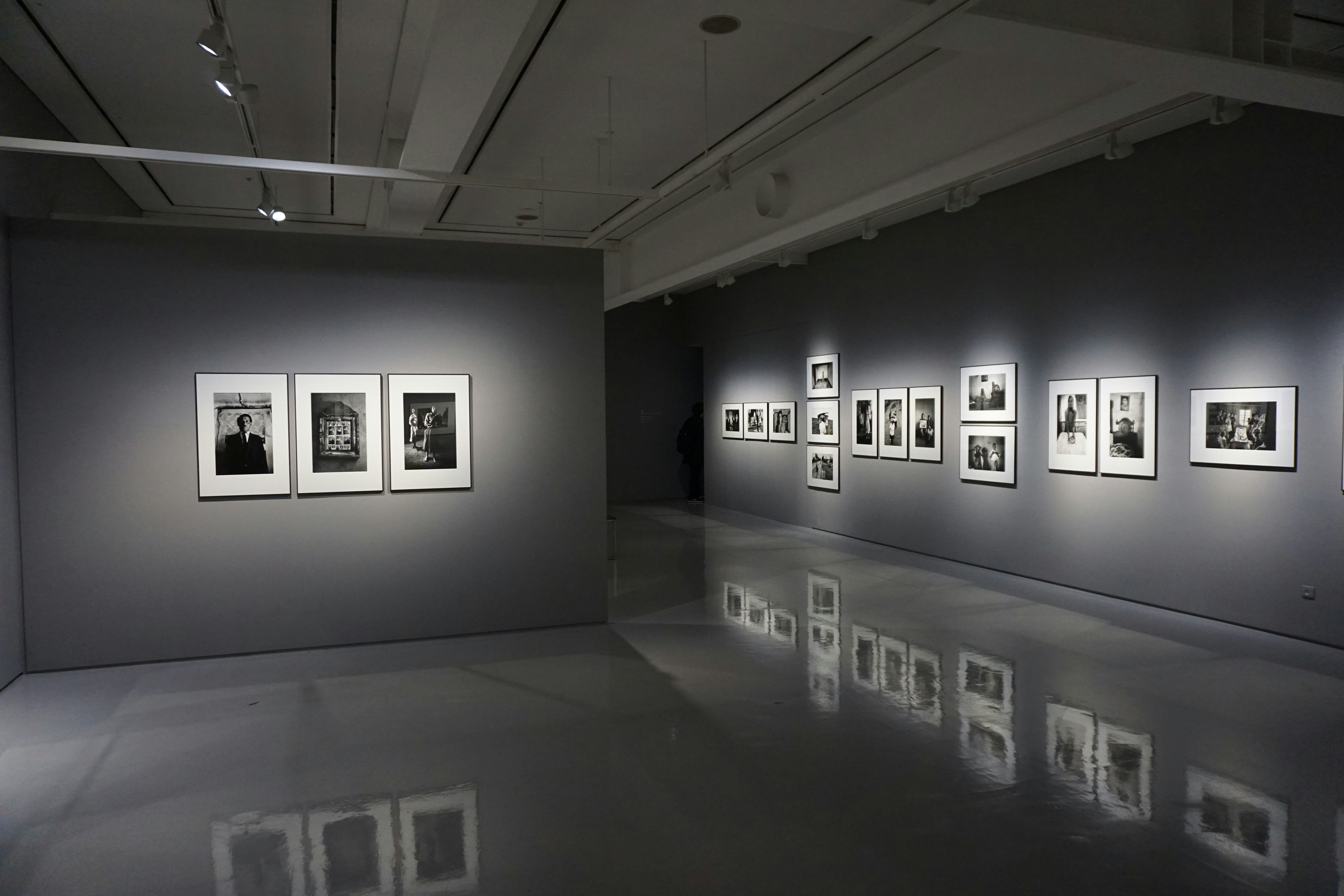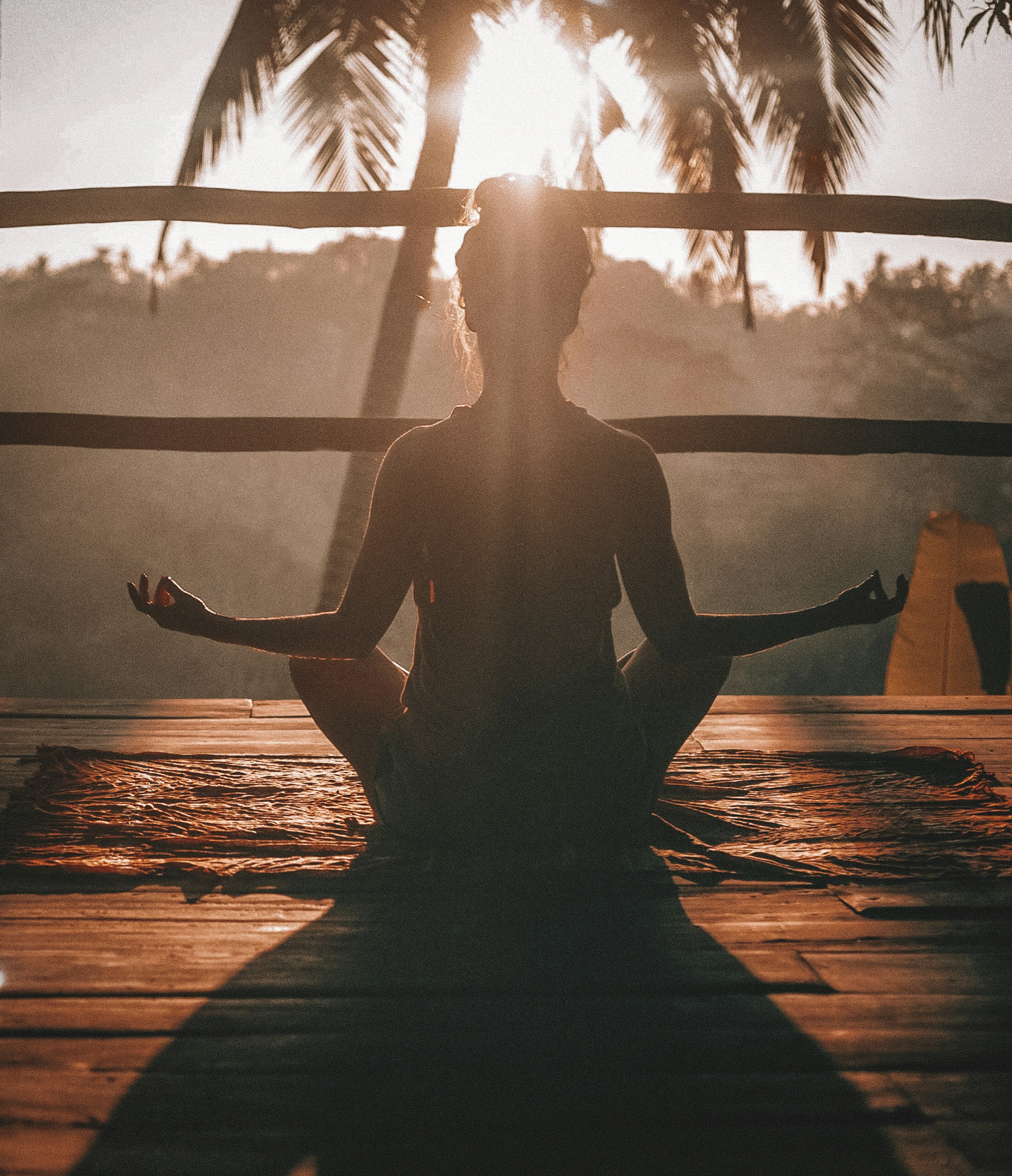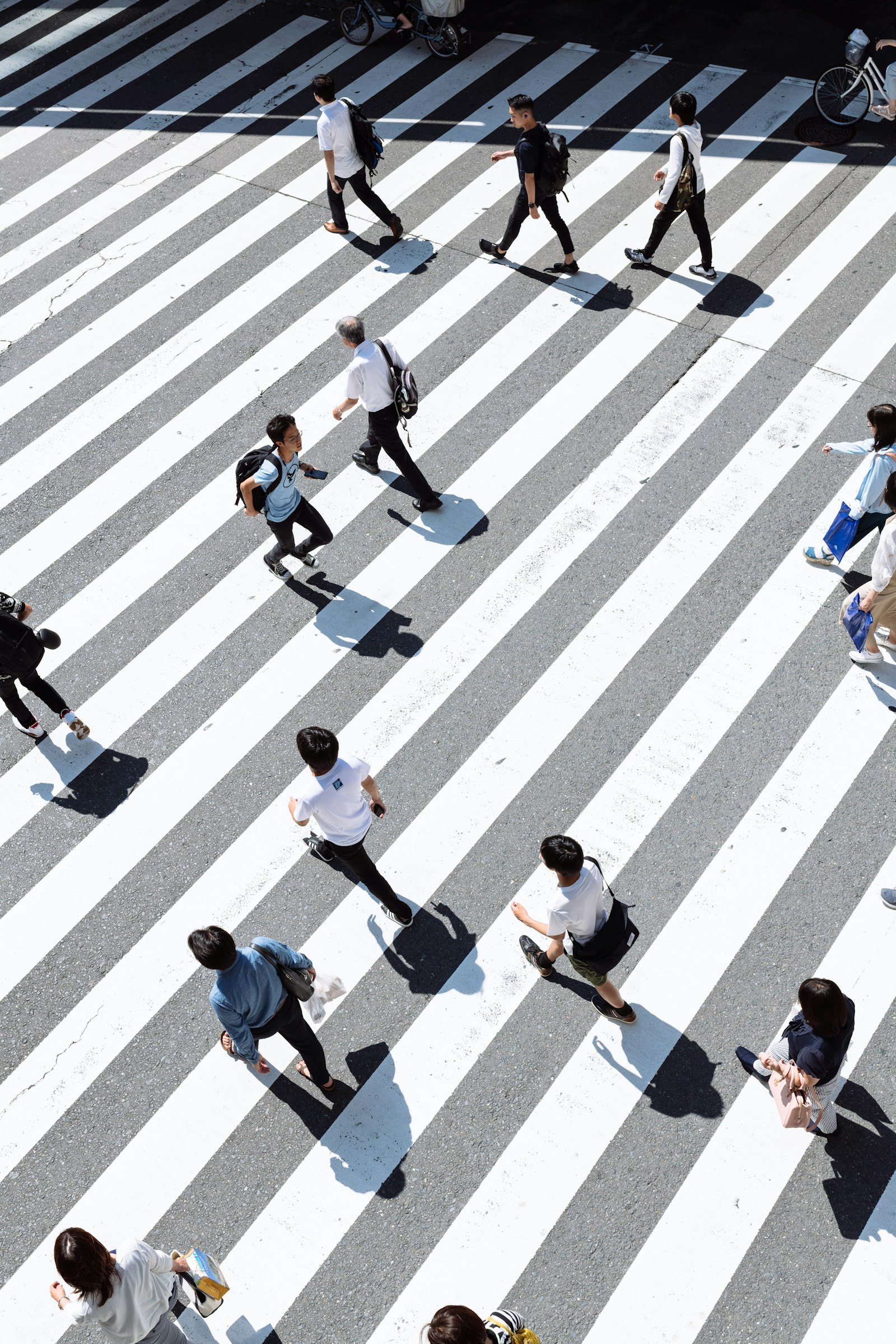Must-Visit Art Exhibitions Around the World in 2023
Malik Mohsin Saleem Khan
April 20, 2023 · 16 min read

Introduction
The global art scene in 2023 represents a vibrant renaissance following years of pandemic-related disruptions, with museums and galleries worldwide mounting ambitious exhibitions that reflect both our contemporary moment and new perspectives on art history. From groundbreaking retrospectives of established masters to platforms showcasing emerging voices, this year's most anticipated exhibitions offer transformative experiences for both seasoned art enthusiasts and curious newcomers.
This curated guide highlights the most significant art exhibitions of 2023 across major cultural capitals and unexpected destinations, featuring diverse artistic mediums, historical periods, and cultural traditions. Whether you're planning international travel or seeking to understand current trends in the art world, these exhibitions provide windows into artistic innovation, cultural dialogue, and the evolving relationship between art and society in our complex global landscape.
Art World Trends Shaping 2023 Exhibitions
Several significant trends are influencing the exhibition landscape in 2023, reflecting broader shifts in the art world and society at large. Understanding these currents provides valuable context for appreciating this year's most notable shows.
Decolonizing the canon: Museums worldwide are actively reassessing their collections and exhibition practices through post-colonial perspectives. This has led to groundbreaking shows that challenge Eurocentric art narratives, highlight previously marginalized artists, and create more inclusive representations of global art history. Major institutions are collaborating with source communities and incorporating multiple cultural viewpoints in their curatorial approaches.
Climate consciousness: As environmental concerns become increasingly urgent, exhibitions addressing ecological themes have proliferated. These range from shows directly confronting the climate crisis to presentations exploring humanity's relationship with nature through various artistic traditions. Additionally, museums are increasingly transparent about the environmental impact of exhibition production itself, with many adopting more sustainable practices.
Digital integration: While physical exhibitions have returned in full force, the digital innovations necessitated by the pandemic have evolved into sophisticated hybrid approaches. Many major exhibitions now feature significant digital components—from immersive installations and virtual reality experiences to expanded online content that extends the exhibition beyond physical space and temporal limitations.
Interdisciplinary dialogue: Traditional boundaries between fine art, design, fashion, technology, and popular culture continue to dissolve. This year's exhibition calendar features numerous shows that embrace cross-disciplinary approaches, reflecting how contemporary artists increasingly work across multiple mediums and conceptual frameworks.
Revisiting overlooked legacies: Continuing a welcome trend, major institutions are mounting significant exhibitions of artists—particularly women, artists of color, and those from non-Western traditions—whose contributions were historically underrecognized despite their substantial influence and innovation.
These trends reflect museums' evolving role in society—not merely as repositories of objects but as active participants in cultural conversations about identity, history, environment, and technological change. The most compelling exhibitions of 2023 engage with these themes while offering transformative aesthetic experiences that speak to our complex moment.
European Highlights: From Renaissance Masters to Contemporary Provocateurs
Europe's unparalleled concentration of museums and galleries offers an extraordinary range of exhibitions in 2023, from scholarly reconsiderations of historical periods to cutting-edge contemporary art.
Vermeer at Rijksmuseum, Amsterdam (February 10 - June 4)
This landmark exhibition represents the largest Vermeer retrospective ever mounted, reuniting over 28 of the Dutch master's surviving 35 paintings. Beyond the unprecedented assembly of these rare works, the exhibition incorporates new technical research that reveals Vermeer's working methods and artistic choices. Highlights include "Girl with a Pearl Earring" (from Mauritshuis), "The Geographer" (from Städel Museum), and "Woman Holding a Balance" (from National Gallery of Art, Washington), displayed alongside period objects similar to those depicted in the paintings. The exhibition contextualizes Vermeer within 17th-century Dutch society while highlighting the psychological intimacy and technical brilliance that make his work resonate across centuries.
Picasso 1906-1916: Revolutions at Centre Pompidou, Paris (May 17 - August 28)
Focusing on Picasso's most transformative decade, this exhibition traces his evolution from late Blue Period works through analytical and synthetic Cubism—years that revolutionized Western art. The carefully selected 120 works demonstrate how Picasso absorbed influences from African sculpture, Iberian art, and contemporaries like Matisse and Cézanne, synthesizing these into radically new visual languages. The exhibition particularly emphasizes the collaborative nature of Cubism's development through Picasso's dialogue with Georges Braque and includes rarely-seen preparatory drawings that illuminate his creative process.
Yayoi Kusama: Infinity Mirror Rooms at Tate Modern, London (Through April 2024)
This immersive presentation features two of Kusama's most acclaimed installations: "Infinity Mirrored Room - Filled with the Brilliance of Life" (2011/2023) and "Chandelier of Grief" (2016/2023). These mesmerizing environments use mirrors, water, suspended objects, and lighting to create seemingly endless spaces that explore concepts of infinity, self-obliteration, and cosmic interconnection. The exhibition contextualizes these works within Kusama's seven-decade career through archival materials and documentation of her early performances and installations. Given the exhibition's popularity, advance booking is essential, with timed tickets typically released three months in advance.
Donatello: The Renaissance at Victoria and Albert Museum, London (February 11 - June 11)
Following acclaimed presentations in Florence and Berlin, this definitive Donatello exhibition arrives at the V&A with over 130 objects that demonstrate the sculptor's revolutionary impact on Renaissance art. The exhibition includes unprecedented international loans of marble, bronze, wood, and terracotta sculptures, alongside drawings, paintings, and objects by contemporaries influenced by Donatello. Highlights include the marble "David" from Bargello, the "Attis-Amorino" from Bargello, and the "Spiritello" bronze from Frick Collection, many traveling outside their home institutions for the first time. The exhibition reveals Donatello's technical innovations, psychological insight, and classical references that transformed Western sculpture.
Hilma af Klint & Piet Mondrian: Forms of Life at Tate Modern, London (April 20 - September 3)
This groundbreaking exhibition juxtaposes two pioneers of abstract art who, despite never meeting, followed parallel paths from representation to abstraction guided by spiritual and philosophical beliefs. The exhibition includes over 250 works, many rarely displayed, that trace both artists' evolution through landscape painting to increasingly abstract forms expressing universal principles. Af Klint's monumental "The Ten Largest" series appears alongside Mondrian's progression through Cubism to his iconic grid compositions. The exhibition challenges conventional narratives about abstraction's development by highlighting af Klint's previously overlooked innovations and exploring how both artists sought to visualize invisible forces through geometric abstraction.
North American Standouts: Diverse Perspectives and Artistic Innovations
Across North America, museums and galleries are presenting exhibitions that reflect the continent's cultural diversity while engaging with contemporary social issues and artistic innovations.
Judy Chicago: Herstory at New Museum, New York (October 12, 2023 - January 14, 2024)
This comprehensive survey spans six decades of Chicago's feminist art practice, from early minimalist experiments through her iconic "The Dinner Party" (1974-79) to recent work addressing environmental concerns. The exhibition includes over 150 paintings, sculptures, textiles, and works on paper, many rarely exhibited, that demonstrate Chicago's technical versatility and conceptual ambition. Beyond her best-known feminist imagery, the exhibition highlights Chicago's engagement with themes of masculinity, mortality, and environmental justice. Archival materials document her pioneering feminist art education programs and collaborative working methods that challenged traditional artistic hierarchies.
Edward Hopper's New York at Whitney Museum of American Art, New York (Through March 5, 2023)
This thematic exploration examines Hopper's complex relationship with New York City, where he lived and worked for nearly six decades. Rather than a traditional retrospective, the exhibition organizes approximately 200 paintings, watercolors, prints, and drawings to reveal how the city's architecture, public spaces, and social dynamics shaped Hopper's distinctive vision. Highlights include iconic paintings like "Early Sunday Morning" (1930) and "New York Movie" (1939) alongside rarely-seen studies and ephemera from the Whitney's extensive Hopper archive. The exhibition reveals how Hopper's seemingly straightforward urban scenes contain subtle social commentary on modernity, isolation, and the American experience during periods of rapid change.
Wangechi Mutu: Intertwined at New Museum, New York (March 2 - June 4, 2023)
This major survey brings together over 100 works spanning Mutu's 25-year career, including collages, sculptures, installations, and films that explore themes of gender, race, colonialism, and the relationship between humans and the natural world. The exhibition highlights Mutu's distinctive visual language that combines references to African traditions, science fiction, fashion magazines, and botanical illustrations into powerful hybrid forms. Centerpieces include her monumental bronze sculptures from the series "The NewOnes, will free Us" (2019), originally commissioned for The Metropolitan Museum's façade, and immersive installations that transform gallery spaces into otherworldly environments challenging Western narratives about Africa and the female body.
Coded: Art Enters the Computer Age, 1952-1982 at Los Angeles County Museum of Art (February 12 - July 2, 2023)
This groundbreaking exhibition examines the first three decades of computer art through approximately 175 works by artists who pioneered creative applications of emerging digital technologies. Rather than focusing solely on screen-based works, the exhibition includes drawings, paintings, sculptures, animations, videos, and installations that demonstrate how computational thinking influenced artistic practices across mediums. Featured artists include Vera Molnár, Harold Cohen, Charles Csuri, Manfred Mohr, and Lillian Schwartz, alongside artifacts from early computer labs and collaborations between artists, scientists, and engineers. The exhibition reveals how these experimental works anticipated contemporary digital art practices while raising prescient questions about human-machine relationships.
Forecast Form: Art in the Caribbean Diaspora, 1990s to Today at Museum of Contemporary Art Chicago (Through April 23, 2023)
This thematic exhibition features work by over 30 artists of Caribbean descent who explore concepts of movement, migration, and cultural hybridity. Rather than organizing works by national origin, the exhibition emphasizes how Caribbean diasporic experiences generate fluid identities and innovative artistic approaches that challenge fixed categories. Media include painting, sculpture, installation, photography, film, and performance by artists including Firelei Báez, María Magdalena Campos-Pons, Teresita Fernández, and Ebony G. Patterson. The exhibition reveals how these artists address histories of colonialism, environmental change, and globalization through works that embody what curator Carla Acevedo-Yates calls "archipelagic thinking"—approaches that emphasize connection and relation rather than isolation.
Global South Exhibitions: Emerging Centers and Cultural Reclamations
Beyond traditional Western art capitals, institutions across the Global South are mounting ambitious exhibitions that center local perspectives while engaging with international art dialogues.
Sharjah Biennial 15: Thinking Historically in the Present at various venues, Sharjah, UAE (February 7 - June 11, 2023)
Conceived by the late curator Okwui Enwezor and realized by Sharjah Art Foundation Director Hoor Al Qasimi, this edition of the influential biennial features over 150 artists from more than 70 countries working across painting, sculpture, photography, video, installation, and performance. The exhibition extends throughout Sharjah's historic district and contemporary art spaces, with many artists creating site-specific works responding to the emirate's architectural and cultural context. Thematic focuses include postcolonial reckonings, environmental concerns, and the politics of representation, with particular emphasis on artists from Africa, the Middle East, South Asia, and their diasporas. The biennial's extensive public program includes performances, films, and conversations that extend its engagement with Enwezor's critical legacy.
Mapu Kufül: Textile Landscapes and Indigenous Sovereignty at Museo Chileno de Arte Precolombino, Santiago, Chile (March 15 - August 20, 2023)
This groundbreaking exhibition presents historical and contemporary textiles by Mapuche weavers, demonstrating how these works encode cultural knowledge, territorial claims, and cosmological concepts. The exhibition brings together approximately 80 textiles dating from the 19th century to the present, including ceremonial ponchos, blankets, and contemporary art pieces that adapt traditional techniques to address current social and political concerns. Developed through collaboration between the museum and Mapuche cultural organizations, the exhibition emphasizes indigenous perspectives through extensive texts and audio guides in Spanish and Mapudungun. The accompanying program includes weaving demonstrations, workshops, and discussions about indigenous rights and cultural repatriation.
Yto Barrada: How to Do Nothing with Nobody All Alone by Yourself at M+ Museum, Hong Kong (March 3 - September 17, 2023)
This mid-career survey of the Moroccan-French artist features approximately 100 works spanning photography, film, sculpture, installation, and textiles that explore themes of migration, postcolonial identity, and vernacular histories. The exhibition takes its title from a 1958 children's craft book, reflecting Barrada's interest in educational systems and forms of knowledge that exist outside official institutions. Highlights include her photographic series "A Life Full of Holes: The Strait Project" (1998-2004) documenting the economic and social realities of the Strait of Gibraltar, and recent textile works inspired by Moroccan craft traditions and the abstract compositions of modernist artists. The exhibition demonstrates how Barrada's multidisciplinary practice challenges dominant historical narratives while preserving marginalized cultural forms.
Bienal de São Paulo: Choreographies of the Impossible at Ciccillo Matarazzo Pavilion, São Paulo, Brazil (September 6 - December 10, 2023)
The 35th edition of the world's second-oldest biennial (after Venice) brings together over 100 artists and collectives from 40 countries under the curatorial direction of Diane Lima, Grada Kilomba, Hélio Menezes, and Manuel Borja-Villel. The theme explores how art can imagine and enact alternatives to seemingly fixed social and political conditions, with particular focus on artists from Latin America, Africa, and indigenous communities. The exhibition extends beyond the modernist pavilion to include interventions in public spaces throughout São Paulo. A significant portion of the biennial is dedicated to performance, dance, and time-based works that literally choreograph new possibilities through the body, complemented by an extensive public program of workshops, conversations, and educational initiatives.
Lubaina Himid: Under-Song at Zeitz Museum of Contemporary Art Africa, Cape Town, South Africa (November 2, 2023 - March 24, 2024)
This major exhibition of the Turner Prize-winning British artist includes paintings, installations, sound works, and theatrical elements created over four decades. While not a traditional retrospective, the exhibition traces recurring themes in Himid's practice, including the overlooked histories of the African diaspora, the legacy of European colonialism, and the role of objects in constructing cultural narratives. The centerpiece is a newly commissioned large-scale installation responding to the museum's architecture—a repurposed grain silo that once facilitated the extraction of African resources. The exhibition emphasizes Himid's engagement with sound and music as forms of resistance and memory, with several works incorporating audio elements that activate the exhibition spaces.
Planning Your Art Exhibition Visits: Practical Considerations
Visiting major art exhibitions requires strategic planning to maximize the experience while minimizing common frustrations like crowds, ticket availability, and exhibition fatigue. These practical recommendations will help you navigate the logistics of art viewing in 2023.
- Advance planning is essential: For blockbuster exhibitions like the Vermeer retrospective or Yayoi Kusama's Infinity Rooms, tickets often sell out weeks or months in advance. Research ticket release dates and set calendar reminders—many museums release tickets in batches, typically 2-3 months ahead. Consider membership at institutions you plan to visit, as members usually receive priority access and sometimes can visit during special hours with reduced crowds.
- Optimize timing: If advance tickets aren't available, strategic timing can improve your experience. Visit on weekday mornings (ideally Tuesday-Thursday) when museums are typically least crowded. Alternatively, many museums offer late evening hours one or two days per week, which often feature fewer visitors and a more relaxed atmosphere. Check if the museum offers timed entry, which can significantly reduce crowding even during popular exhibitions.
- Utilize digital resources: Before visiting, explore exhibition websites for floor plans, thematic explanations, and highlighted works. Many major exhibitions now offer companion apps or audio guides that can be downloaded to your personal device in advance, eliminating the need to wait for audio guide distribution at the museum. Some institutions also provide virtual exhibition tours that can help you prioritize which sections to focus on during your in-person visit.
- Consider exhibition-specific factors: Research any special requirements or characteristics of exhibitions you plan to visit. For instance, immersive installations like Kusama's Infinity Rooms typically limit viewing time to 1-2 minutes per room, while other exhibitions may involve timed progression through sequential spaces. Understanding these factors in advance helps set appropriate expectations and plan your museum day accordingly.
- Practice sustainable art tourism: If you're traveling internationally to visit exhibitions, consider environmental impact by combining multiple cultural destinations in one trip. Many of the exhibitions listed above are part of broader cultural programs in their cities, with coordinated scheduling of related shows at nearby institutions. Research complementary exhibitions, architectural sites, and cultural events that can create a more comprehensive experience while reducing the carbon footprint of separate trips.
Remember that exhibition viewing is both intellectually and physically demanding. Plan for breaks, wear comfortable shoes, and consider splitting visits to large museums across multiple days when possible. Most importantly, remain flexible—some of the most meaningful art experiences come from unexpected encounters rather than rigidly scheduled itineraries.
The Evolving Exhibition Landscape: Looking Beyond 2023
As we consider the exhibition highlights of 2023, several emerging developments suggest how art presentation may continue to evolve in coming years, reflecting broader shifts in technology, institutional priorities, and audience expectations.
Hybrid exhibition models: The distinction between physical and digital exhibitions is increasingly blurring, with many institutions developing sophisticated approaches that leverage the strengths of both formats. Beyond pandemic-necessitated virtual tours, museums are exploring how digital components can extend exhibition impact before, during, and after physical visits. Future exhibitions may feature expanded digital content that provides deeper context, alternative perspectives, or interactive elements that complement rather than merely document the physical installation.
Collaborative curation: Traditional curatorial hierarchies are giving way to more collaborative approaches that incorporate multiple perspectives, including those of artists, community members, and cross-disciplinary experts. This shift reflects growing recognition that singular curatorial voices often reproduce existing power structures and limited viewpoints. Future exhibitions may more frequently credit curatorial teams or collectives rather than individual star curators, with transparent acknowledgment of the various contributors to exhibition concepts.
Environmental reconsideration: The environmental impact of exhibition-making—from artwork shipping to installation materials to visitor travel—is receiving increased scrutiny. Some institutions are beginning to publish carbon footprints for major exhibitions and implement sustainability guidelines for exhibition production. Future exhibitions may feature more locally-sourced content, longer durations to justify resource expenditure, and creative approaches to reducing waste while maintaining high production values.
Institutional transparency: Audiences increasingly expect transparency regarding exhibition funding, decision-making processes, and institutional power structures. This shift is partially driven by activist movements questioning museum governance, collection practices, and relationships with controversial donors. Future exhibition documentation may more explicitly acknowledge these factors, with some institutions experimenting with public inclusion in exhibition development processes rather than presenting finished projects as fait accompli.
Expanded sensory engagement: While visual art remains central to most exhibitions, curators and artists are increasingly incorporating multisensory elements that engage hearing, touch, smell, and even taste. This approach reflects both artistic interest in synesthetic experience and efforts to make exhibitions more accessible to visitors with diverse sensory abilities. Future exhibitions may more frequently feature sound components, tactile elements, and olfactory dimensions that create more immersive and inclusive experiences.
These evolving approaches suggest that the exhibition format itself remains a site of creative innovation and institutional experimentation. The most forward-thinking museums and galleries recognize that how art is presented significantly shapes its meaning and impact, making exhibition design an increasingly crucial aspect of contemporary art practice and institutional identity.
Conclusion
The extraordinary range and ambition of art exhibitions in 2023 reflect both the resilience of cultural institutions following pandemic disruptions and their evolving role in addressing contemporary challenges. From landmark retrospectives that reassess canonical figures to thematic exhibitions exploring urgent social questions, this year's offerings demonstrate the continued vitality of museums and galleries as spaces for aesthetic experience, historical reconsideration, and public dialogue.
What distinguishes the most compelling exhibitions of 2023 is their ability to balance scholarly rigor with accessibility, historical awareness with contemporary relevance, and aesthetic pleasure with critical engagement. Whether presenting Renaissance masters, modernist innovators, or emerging contemporary voices, these exhibitions invite viewers to slow down, look closely, and consider both the specific contexts in which artworks were created and their resonance across time and place.
For the art enthusiast planning international travel or the curious visitor exploring local cultural offerings, this year's exhibition calendar offers unprecedented opportunities to encounter works that might challenge assumptions, expand understanding, and provide moments of profound connection. In a world often dominated by rapid consumption of digital images, these carefully curated physical presentations remind us of art's unique capacity to create spaces for contemplation, conversation, and collective experience.
As you plan your exhibition visits for the remainder of 2023, consider venturing beyond familiar institutions and artistic periods to discover unexpected perspectives and emerging talents. The most rewarding art experiences often come from openness to the unfamiliar—whether that's a historical period outside your usual interest, a medium you haven't previously appreciated, or cultural traditions beyond your immediate knowledge. In this spirit of curiosity and discovery lies the transformative potential of art engagement, making each exhibition visit not just a viewing experience but an opportunity for personal and intellectual growth.
Frequently Asked Questions
What should I consider when planning international travel for art exhibitions?
Beyond securing exhibition tickets well in advance, research complementary cultural offerings in each destination to create a cohesive itinerary. Many cities coordinate openings of major exhibitions with related shows at smaller institutions, gallery events, and public programs. Consider purchasing city museum passes for destinations with multiple venues of interest, and investigate whether exhibitions you're interested in will travel to other locations that might align better with your schedule or other travel plans. For popular exhibitions with limited ticket availability, look into private tours or museum membership options that might provide priority access.
How can I meaningfully engage with art exhibitions if I don't have specialized knowledge about art history?
Most major exhibitions are designed to be accessible to visitors with varying levels of art knowledge. Take advantage of introductory wall texts, audio guides, and exhibition catalogs that provide context. Consider joining a public tour for an introduction, then returning to spend time with works that particularly resonate with you. Rather than feeling pressured to see everything, focus on quality engagement with selected pieces—spend at least 3-5 minutes with works that interest you, noting your personal responses before reading interpretive materials. Remember that emotional and intuitive responses are valid ways of engaging with art, and questions or confusion can be productive starting points for deeper appreciation.
Are there ways to experience these exhibitions if I can't travel to see them in person?
Many major exhibitions now offer substantial digital components, ranging from virtual tours and interactive websites to extensive video documentation and online events. Exhibition catalogs, which typically feature scholarly essays and high-quality reproductions, offer another way to engage with exhibition content. Some museums also produce documentary films about significant exhibitions that may be available through streaming platforms or educational institutions. While these alternatives don't replicate the experience of seeing original artworks, they provide valuable access to curatorial perspectives and content for those unable to visit in person.
How can I support artists and arts institutions beyond attending major exhibitions?
Consider engaging with smaller, local arts organizations that often operate with limited resources while providing crucial support for emerging artists and serving their communities. Attend exhibition openings, artist talks, and educational programs that provide deeper context for the work. If financially possible, become a member of arts institutions you value, purchase exhibition catalogs (which directly support scholarly publishing), and consider collecting works by living artists through galleries, art fairs, or direct studio purchases. Additionally, advocate for arts funding and education in your community, as public support remains essential for a thriving cultural ecosystem.
Malik Mohsin Saleem Khan
Founder
Author bio information
Related Articles

The Art of Slow Living: Embracing Mindfulness in Modern Culture
Jul 2, 2023 · 14 min read

Global Cinema Appreciation: Understanding Film Beyond Hollywood
Jan 18, 2024 · 16 min read

Literary Classics Guide: Finding Personal Connection with Timeless Works
Jan 25, 2024 · 14 min read